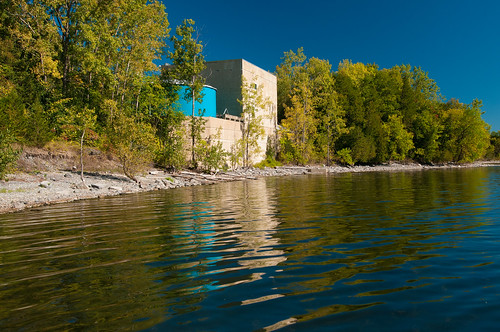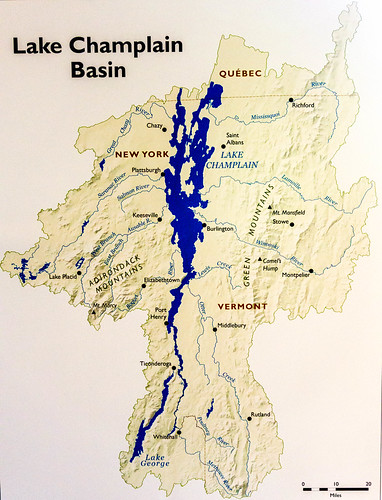
The Vergennes-Panton Water District along Lake Champlain in Vermont was able to upgrade the city's water treatment plant with support from USDA. The Department is working through several agencies to help improve water quality in the lake. USDA Photo by Bob Nichols.
In recent years, blue-green algae blooms have frequented Lake Champlain, impairing the lake’s water quality. Through a new partnership with USDA, nearly 20 organizations in the area will work together with farmers and ranchers to help improve water quality of the lake and reduce algae blooms.
The Vermont Agency of Agriculture Food & Markets and the Vermont Agency of Natural Resources are uniting partners to engage and support farmers and forest landowners who use voluntary conservation practices that lead to cleaner water. Called the “Accelerated Implementation of Agricultural and Forestry Conservation Practices in the Lake Champlain Watershed of Vermont and New York,” this project will provide outreach to farmers throughout the watershed and help connect them with innovative conservation solutions for their land.
Last week, I visited this natural treasure and met with the local partners who are making this effort possible. Lake Champlain provides habitat for more than 300 bird species and 80 fish species, holds 6.8 trillion gallons of water, and provides drinking water for more than 200,000 people. The lake provides critical habitat as well as serves as an economic driver from recreation.
But a high level of nutrients, like phosphorous, has jeopardized the lake’s health. Agriculture is one contributor of phosphorous, and this project will enable farmers and forest landowners to take proactive steps to reduce or prevent runoff of phosphorous.

Lake Champlain is the sixth largest body of fresh water in the United States, topped in size only by the five Great Lakes. It contains 6.8 trillion gallons of water and is a drinking water source for nearly 200,000 people. Water quality is the lake is negatively impacted by phosphorus pollution.
Studies show that most of the phosphorous entering the lake comes from a relatively small footprint of land. Together, these local partners working with USDA, will target resources to areas most in need, what we call critical source areas, such as steep lands and lands prone to flooding. This project will target outreach and implementation of conservation practices to those areas.
This project is one of more than 100 unveiled last week as part of the first cadre of projects funded by the Regional Conservation Partnership Program (RCPP). Created by the 2014 Farm Bill, RCPP is a partner-driven, locally-led approach to conservation. It offers new opportunities for USDA’s Natural Resources Conservation Service (NRCS) to harness innovation, welcome new partners to the conservation mission, and demonstrate the value and efficacy of voluntary, private lands conservation to a national audience.
With RCPP, partners are in the driver’s seat with technical and financial help from NRCS.
RCPP empowers local organizations and communities to demonstrate the importance of locally-led action and benefit from strong public-private partnerships in delivering solutions to natural resource challenges.
RCPP also attracts additional resources and allows for the expansion of private lands conservation efforts. In this round of projects, the agency is providing more than $370 million to 100-plus projects in all 50 states and leveraging at least $400 million in partner contributions.
In Vermont, NRCS plans to invest $16 million in the project, and the partners will match with $20.5 million in contributions, including funding and technical assistance.
The heart of RCPP is about empowering local organizations to design and deliver solutions that benefit natural resources where they live and work. This project in Vermont and New York brings together a variety of partners from the local and state levels, including soil and water conservation districts, agricultural associations, government agencies and non-profit organizations. We’re proud of the leadership these local organizations are providing to execute this program, and we look forward to the benefits to come.
Working together, we can ensure we have a cleaner, healthier Lake Champlain for future generations.

NRCS Chief Jason Weller (at podium) joined leaders and partners from Vermont and New York to announce a new project that will work to improve water quality in Lake Champlain. USDA Photo.
No comments:
Post a Comment
Note: Only a member of this blog may post a comment.